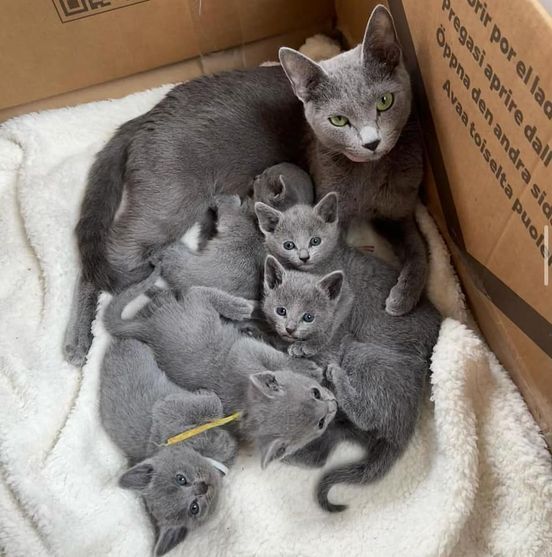The Russian Blue cat is more than just a striking coat and piercing green eyes it’s a breed steeped in mystery, elegance, and quiet intelligence. Often mistaken for aloof due to its reserved nature, the Russian Blue is actually deeply loyal and emotionally attuned to its human companions. Originating from the port city of Arkhangelsk in northern Russia, this breed was once known as the Archangel Cat, a name that hints at its almost mythical presence in feline history. While many articles touch on its beauty and hypoallergenic qualities, few explore the deeper layers of what makes this breed so compelling.
Unlike more vocal or attention seeking breeds, Russian Blues communicate through subtle gestures and soft meows, often forming strong bonds with one or two people in a household. Their intelligence is not just anecdotal, it’s observable in their problem-solving behavior, memory retention, and ability to adapt routines based on their owner’s habits. Owners frequently report that their Russian Blues anticipate daily activities, from mealtimes to bedtime rituals, with uncanny precision. This breed doesn’t just live in your home it learns it.
Their plush double coat, often described as silvery blue, is not only beautiful but functional. It insulates them well, a nod to their cold climate origins, and sheds minimally, making them a favorite among allergy sensitive pet lovers. However, the hypoallergenic label should be approached with nuance. While Russian Blues produce less of the Fel d 1 protein that triggers allergies, individual reactions vary, and prospective owners should spend time with the breed before committing.
Diet and exercise play a crucial role in maintaining the Russian Blue’s health and demeanor. Prone to weight gain due to their sedentary tendencies, they benefit from interactive toys and puzzle feeders that stimulate both body and mind. Their hunting instincts remain sharp, and they thrive when given tasks that mimic stalking or chasing. This mental engagement is not optional it’s essential to prevent boredom and behavioral issues.
Socially, Russian Blues are selective. They may retreat from strangers but rarely act aggressively. Their cautious nature is often misread as shyness, yet it reflects a breed that values trust and routine. Once that trust is earned, they become affectionate companions, often following their humans from room to room, offering quiet companionship rather than constant demands.
In terms of longevity, Russian Blues are among the healthiest purebred cats, often living well into their late teens. Their genetic pool has remained relatively stable, avoiding many of the hereditary issues seen in more manipulated breeds. This resilience, combined with their low-maintenance grooming needs and gentle temperament, makes them ideal for both first-time cat owners and seasoned feline enthusiasts.
What truly sets the Russian Blue apart is its balance of elegance and depth. It’s not a breed that dazzles with antics or flamboyant behavior. Instead, it captivates through quiet intelligence, emotional sensitivity, and a timeless aesthetic that feels both regal and approachable. For those seeking a cat that offers companionship without chaos, beauty without vanity, and loyalty without neediness, the Russian Blue stands in a class of its own.
Related Cat Breeds:

